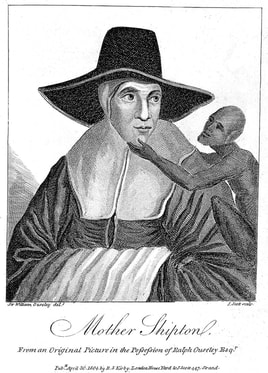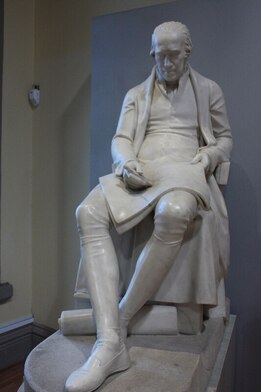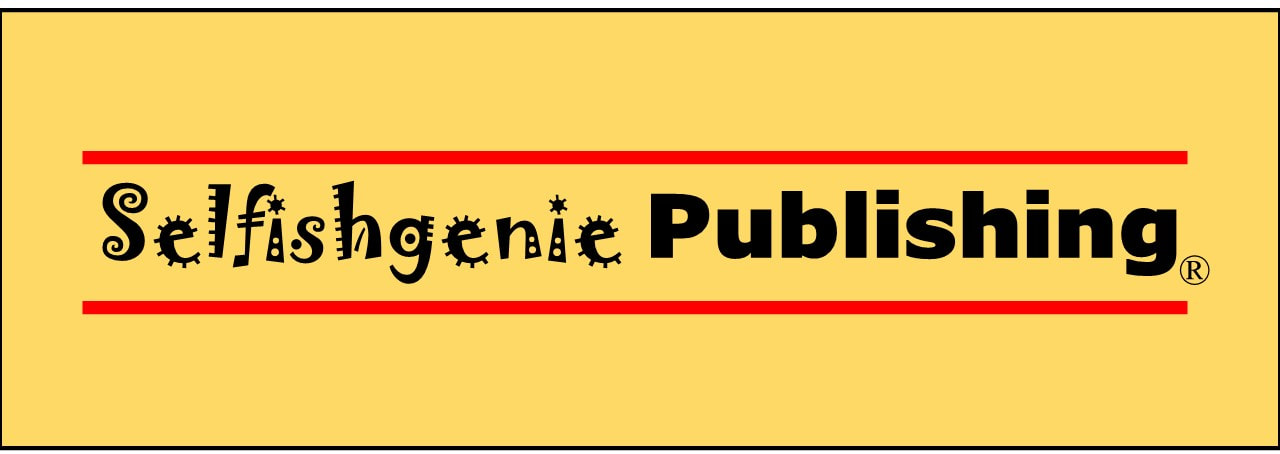Has Some Of Our Technology Been Predicted By Clairvoyants? As a Sci-Fi author with a background in technology (OK, I’ll own up, it was the technology of the 60s and 70s), I get rather annoyed when claims are made that someone must have been a clairvoyant, because they foresaw such and such a technological development. Perhaps they weren’t a clairvoyant, perhaps they were just (a) observant and/or (b) imaginative. The problem for those people was that they could think creatively and imaginatively, but they didn’t have the technology available to turn their creativity into a reality. I’ll give you an example. Jules Verne published his book “The First Men In The Moon” in 1901, which featured space travel. So, was he a clairvoyant, or was he just able to imagine rocket ships?  Author Jules Verne - not clairvoyant Author Jules Verne - not clairvoyant The technology which enabled space travel didn’t start development until the late 1930s and didn’t become a reality until the 1940s. After that it accelerated to the point where humankind really did go to the Moon and continues to travel into space to this day. Was Verne a clairvoyant? No. he just knew that if flight was possible, it must surely follow that man would eventually find a way to travel outside the Earth’s atmosphere. Gas filled and hot air balloons had been around since 1783. Gliders had been around since George Cayley flew the first in 1853 and the Wright brothers’ maiden flight, lasting 3 seconds, took place in 1903. So lots of people were thinking about flight and to what it might lead. Mother Shipton is often credited with being a clairvoyant or seer for some of the things she “predicted”.  Mother Shipton - but probably not. Mother Shipton - but probably not. For those of you that don’t know of her, Mother Shipton was a witch, wise woman, seer, clairvoyant, all or none of those things who lived in Yorkshire (or may be entirely fictional) from the late 15th to the mid 16th centuries. She is credited with making many predictions. The first thing to know is that the first book of her predictions, the only evidence that they were ever made, didn’t appear until 1641, 80 years after her death and some of the language used is incorrect for her lifetime, using words that weren’t coined until later. Even the picture used to accompany this blog is a fake. The hat isn’t from the Tudor period, it is much later. This book “predicted” events that took place either during Mother Shipton’s lifetime or after her death but before the book was published. One prediction that is claimed for her was the dissolution of the monasteries, which started in 1531and the marriage of Henry VIII to Ann Boleyn (1533). She didn’t die until 1562 and the book didn’t appear until 1641, so you can draw your own conclusions.  Charles Hindley Charles Hindley The second thing to know is that the epic poem credited to her that makes most of the predictions about the future is an established fake. It appeared in 1862 in a new edition of the book of Mother Shipton’s predictions and the author of the fake was Charles Hindley, who confessed to his act 10 years later. He was the book’s editor. Yet many people still believe that Mother Shipton was the author of both the original book and the forged poem. OK, but the predictions made in the fake were still remarkable, or so it is claimed. They include women wearing trousers, the horseless carriage and submarines. It also predicts three world wars. The first women to wear trousers in Britain did so in the 1850s, as an early act of feminism. The word “bloomers” stems from then and was first used to describe a type of Turkish or Arabic style of pants worn by Emily Bloomer. They apparently scandalised Victorian Society.  A replica of the Turtle based on the original drawings. A replica of the Turtle based on the original drawings. Predicting wars is always a safe bet. Britain has been involved in many of them, the most recent at the time having been the Crimean War (1853-56) but the Napoleonic Wars, which were in effect global as they affected overseas empires, only ended in 1815 – within living memory for some. One of the claims is that the poem predicted the submarine. No it didn’t. The first submarine had been tried out in 1690 and the first military submarine, the Turtle, had been tried out by the Americans in 1776. The publication of the fake was after the Great Exhibition, which had been held in Hyde Park in 1851. It was held inside a great glass building (the Crystal Palace), which was also “predicted” in the fake poem but, more importantly, the exhibition featured many of the innovations mentioned in the poem as well as stimulating discussion about rafts of new technology, some of which became a reality within that century or at the beginning of the 20th century.  The Crystal Palace -original built in Hyde Park, London, before being moved, then destroyed by fire in 1936 The Crystal Palace -original built in Hyde Park, London, before being moved, then destroyed by fire in 1936 It is likely that the Great Exhibition galvanised research into new technology, enabling what would follow and it also allowed Hindley to create his “predictions” for Mother Shipton. So, Mother Shipton didn’t actually predict much (if anything) and Hindley didn’t predict much either. But he did have a bit of an imagination. Because it is imagination, not prediction, that stimulates innovation. The mathematics on which we build our science and engineering started out in Ancient Egypt, Babylon and Greece, with people like Archimedes, Pythagoras and Euclid. Once you have mastered the mathematics, turning an idea into a reality is all down to the availability of the technology.  Archimedes Archimedes We are well aware of what ancient civilisations created using the technology of their day. They certainly understood a lot of about the mathematics of mechanical engineering. “Give me a lever long enough and a fulcrum on which to place it and I will move the world” is a quote attributed to Archimedes, who lived in the 3rd century BC. And one of the Seven Wonders of the ancient world were the pyramids, the building of which would have been impossible without a sound understanding of mathematics. Who knows how much further the ancients would have been able to get had they been able to unravel the mysteries of organic chemistry and electricity? The story goes that James Watt (1736-1819) was sitting in his kitchen watching his kettle come to the boil when he saw that the steam from the kettle had the power to raise the kettle’s lid. The idea came to him that if he could build a big enough kettle, he could make steam do much greater amounts of work. The idea was one of the great driving forces of the industrial revolution. All Watt needed was the technology to build his bigger kettle - and that was available in his day. So Watt isn’t described as a clairvoyant, he is described as an inventor and engineer.  Inventor and Engineer James Watt Inventor and Engineer James Watt There we have it. Your “clairvoyant” or “seer”, is my inventor who lacked the technology to turn their idea into a reality. They couldn’t see into the future, but they could have ideas about ways their world could be changed or improved. In the late 19th century the vast majority of humanity couldn’t imagine humankind travelling to the Moon, but Jules Verne could. Others came behind him to turn his imagination into a reality and they may even have been inspired by his book to make the attempt. As Sir Isaac Newton said in 1865, when complimented on his developments in mathematics by Robert Hooke, “If I have seen further, it is by standing on the shoulders of Giants”. And so it is with authors. Authors have an imagination. If they didn’t, they wouldn’t be able to write their stories.  It has been claimed that some authors have “predicted” the Covid-19 pandemic. No, they haven’t (“The Eyes Of Darkness” by Dean Koontz is one that is cited). Those authors have taken what they know about historical outbreaks of diseases and linked it to knowledge of modern scientific research into viruses and used that to create an imaginary pandemic. In fact Koontz’s virus doesn’t cause a pandemic, it causes a child to become psychic, but that isn’t explained by the people who cite the book as a “prediction”. The fact that any book uses a pandemic caused by a rogue virus that spreads quickly isn’t a prediction, it is a knowledge of history: a knowledge of the spread of the Black Death, of hantavirus, of yellow fever, typhoid, typhus, polio, cholera and, one of the biggest up until now, influenza. They didn’t even have to imagine the most common symptoms of Covid-19, because they could borrow most of those from Spanish Flu, Swine Flu and Bird Flu, the latter two both being caused by the SARS virus, of which Covid-19 is also a strain. Add the words “biological warfare” and/or “rogue government” to the mix, exaggerate the severity of the illness and you have a good sci-fi plot in the making. As for most other sci-fi, some of what was “predicted” has happened.  The classic Star Trek communicator The classic Star Trek communicator The communicators used in the first series of Star Trek are no more than our modern mobile phones. And no, they weren’t a prediction. Research had already started into portable telecommunications systems small enough to fit into a pocket. It just took a few more years for the technology to arrive that turned the research into a reality and the technology came out of projects that were already running – the American and Russian space programmes. And those programmes came out of the Second World War secret weapons developed by the Nazis. Modern super computers came out of the work of the code breakers at Bletchley Park in World War II and they borrowed heavily from the work of Charles Babbage (1791 – 1871) and other pioneers. So, have you had a great idea for something that we could do with around here but don’t presently have because of a lack of technology? Write it into the plot of a book and you could be hailed as a clairvoyant. While someone else will take your idea and start on the hard work of developing the technology to make it happen. Some things we still aren’t so sure about, of course. Faster than light travel, for example, which we would need for deep space exploration, is not thought to be possible. But several writers have predicted it (including me). But first we’ve got to get past all that messy e=mc squared stuff. If you have enjoyed this blog and/or found it informative, be sure not to miss any future posts by signing up for our newsletter. Just click the button below. We promise not to spam you and you can unsubscribe at any time.
0 Comments
Leave a Reply. |
AuthorThis blog is compiled and curated by the Selfishgenie publishing team. Archives
March 2025
|

 RSS Feed
RSS Feed